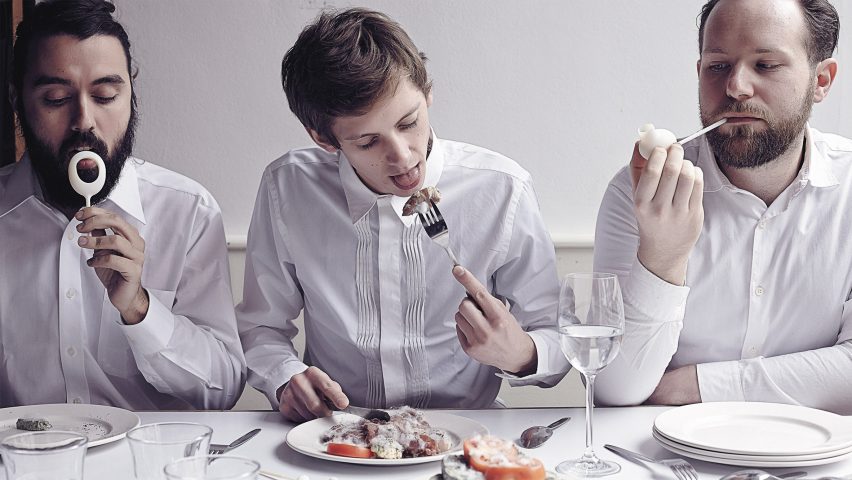
Ten experimental designs that tackle the food challenges of the Anthropocene era
Zane Cerpina and Stahl Stenslie's have collected experimental food designs, including whisky made from urine and cows that harness energy, for their Anthropocene Cookbook. The authors chose 10 of their favourites for Dezeen.
Published by MIT Press, Cerpina and Stenslie's anthology confronts the idea that the Anthropocene era — the time during which humans have had a substantial impact on the Earth's environment — entails a radical reassessment of what we eat, and how.
The Anthropocene Cookbook's chapters traverse topics such as alternative approaches to food security, new potentially edible ingredients and the culinary possibilities offered by the human body.
Cookbook aims to provoke creative thinking around future crises
The book features art and design projects involving ideas such as 3D-printing endangered animal parts to enable the preservation of cultural traditions, genetically engineering the human body so it has its own algae population, and incorporating plastic into the food chain.
Cerpina and Stenslie — who independently are both artists, curators and researchers — embarked on the book to try to provoke creative thinking about the existential challenges facing humanity.
"One of the main goals of the book was to advance thinking in and about the Anthropocene," Cerpina told Dezeen. "We were questioning, what is the best medium to think about our futures? Food concerns us all every day, and it is, therefore, a raw material well suited for cultural commentaries."
"Mixing it through art and design we get very powerful ingredients that provide us with new ethics and aesthetics — and ultimately thinking — fit for this transitory and liminal time."
Although the initial reaction from a lot of readers to the projects in the book may be one of disgust, Cerpina and Stenslie challenge people to question that response.
"Disgust and suspicion are not uncommon when it comes to novel cuisine — or novel thinking for that matter," said Stenslie. "Our persistent neophobia toward new foods can keep the bad decisions at bay, but a certain dose of neophilia, wildness and risk-taking will come in handy in the future."
Time to change before current menu goes "extinct"
While most of the projects are provocations rather than straightforward solutions, the authors emphasise that taboos change and not everything that causes apprehension now will continue to.
"Such was the case of sushi, which was initially perceived with disgust in Western countries but is now an accepted food worldwide," said Cerpina.
Importantly, although the option to eat only organic, regeneratively farmed meat, vegetables, fruits and nuts might already be a luxury, in the future it could be an impossibility.
"The availability of traditional foods is changing rapidly," said Stenslie. "Biodiversity loss, freshwater scarcity, soil degradation and a wetter and stormier climate are increasingly threatening global food security. Our current menu is going extinct."
"Including the new and strange is a good start for us to not only survive but also to thrive in the Anthropocene," added Cerpina. "Why not start now?"
Read on for Cerpina and Stenslie's selection of ten standout projects from the book and the food challenges they answer.
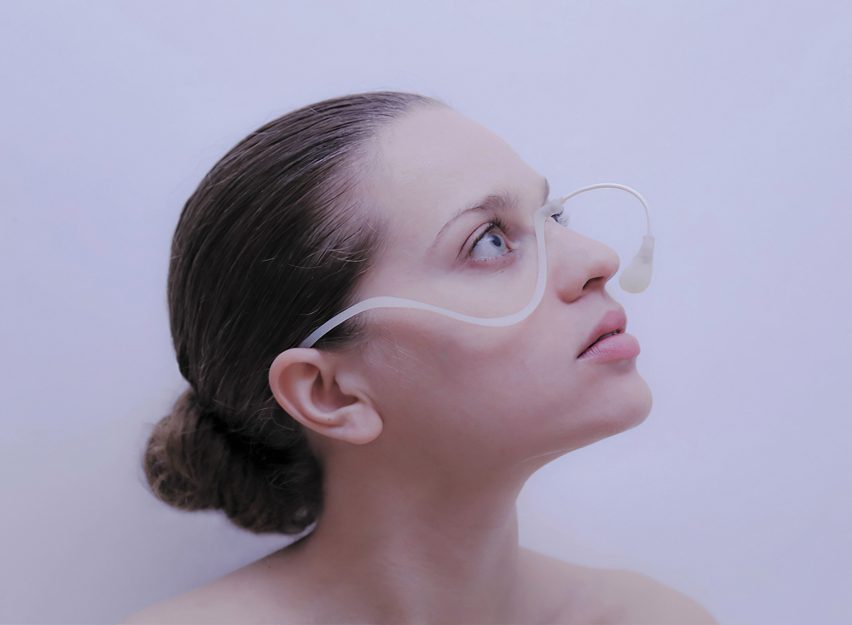
Ghost Food (2013)
"The challenge here is, many species are being eaten to the brink of extinction. How can we taste what's gone?
"GhostFood project authors Miriam Simun and Miriam Songster pair synthetic scents and facsimile edible ingredients to simulate the taste experience of foods that soon might become unavailable due to climate change.
"These food simulations are achieved using a wearable device that delivers scents under the nose, allowing for direct olfactory stimulation."
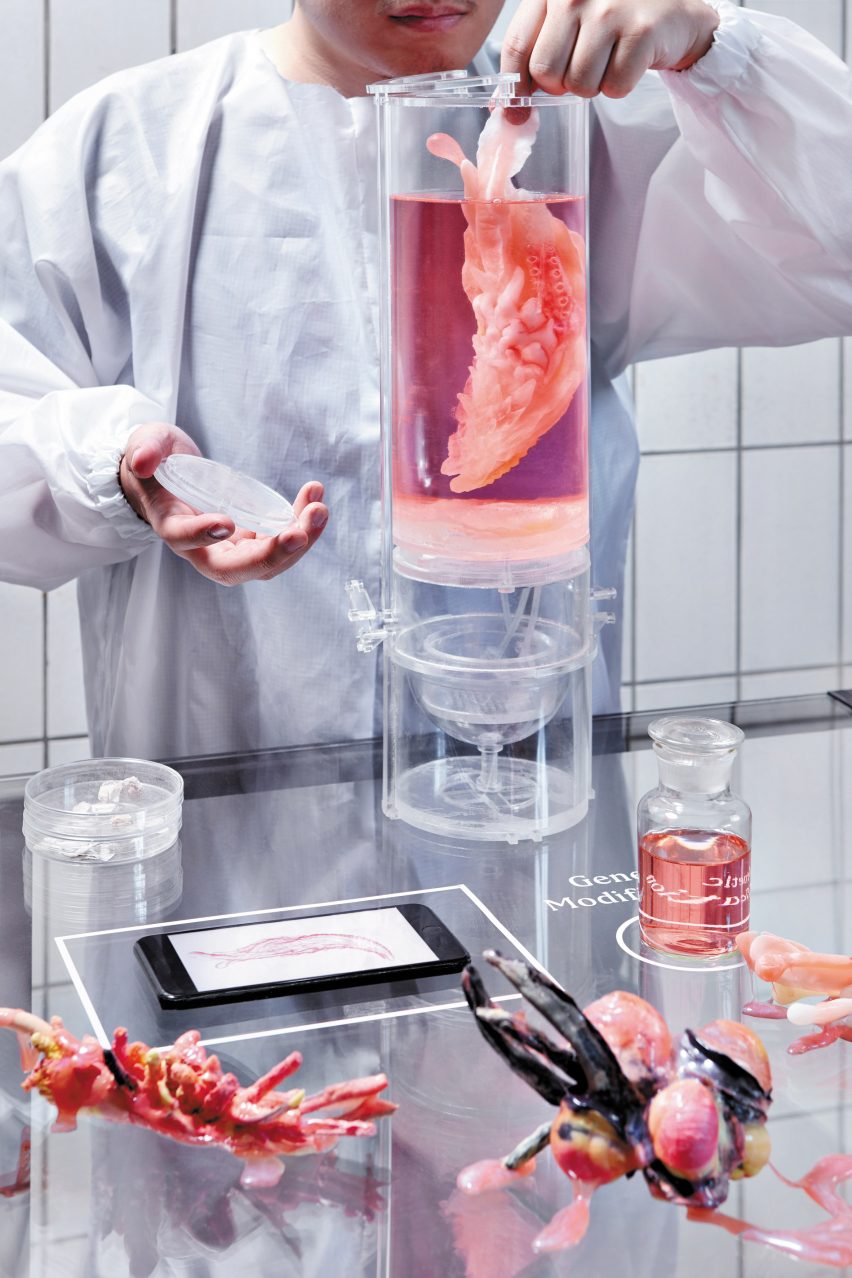
Tiger Penis Project (2018)
"How to save endangered species through eating them?
"In China, the high demand for tigers and other wild animals used for healing purposes poses a massive threat to endangered species. The Tiger Penis Project by Kuang-Yi Ku aims to replicate the tiger penis that is believed to enhance male virility using biotechnologies and 3D printing.
"Ku believes that creating a new interpretation of traditional Chinese medicine would secure cultural traditions while ensuring no harm is done to wildlife."
Find out more about Tiger Penis Project ›
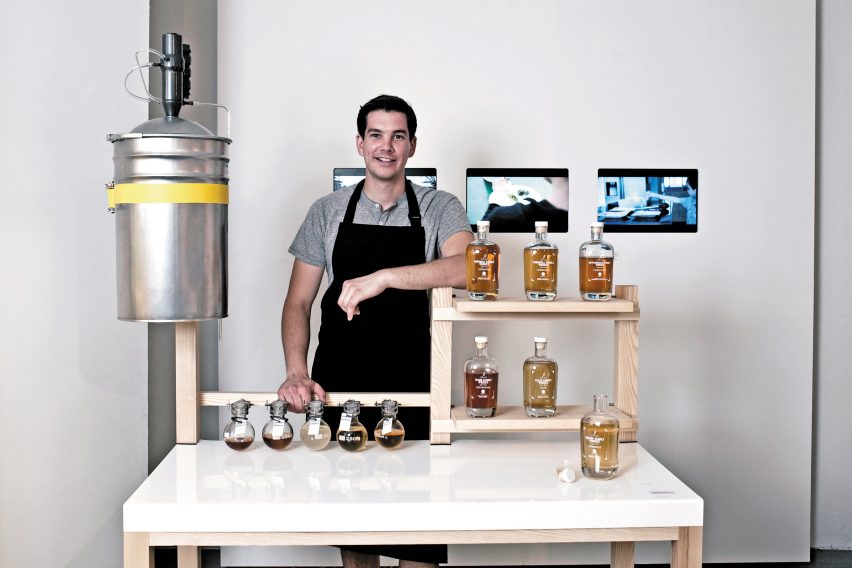
Gilpin Family Whisky (2010)
"How personal can we go in food production? Can we use the human body as a resource for edibles?
"James Gilpin was inspired by the fact that people with diabetes have high sugar levels in their urine. As both himself and family members have the condition, Gilpin went about trying to utilise this rarely considered resource and created a unique product out of it — the Gilpin Family Whisky — a single malt whiskey developed by processing urine obtained from older diabetic patients.
"Gilpin Family Whisky challenges the taboo of consuming urine by breaking its composition down to basic chemical compounds and finding a practical use for it."
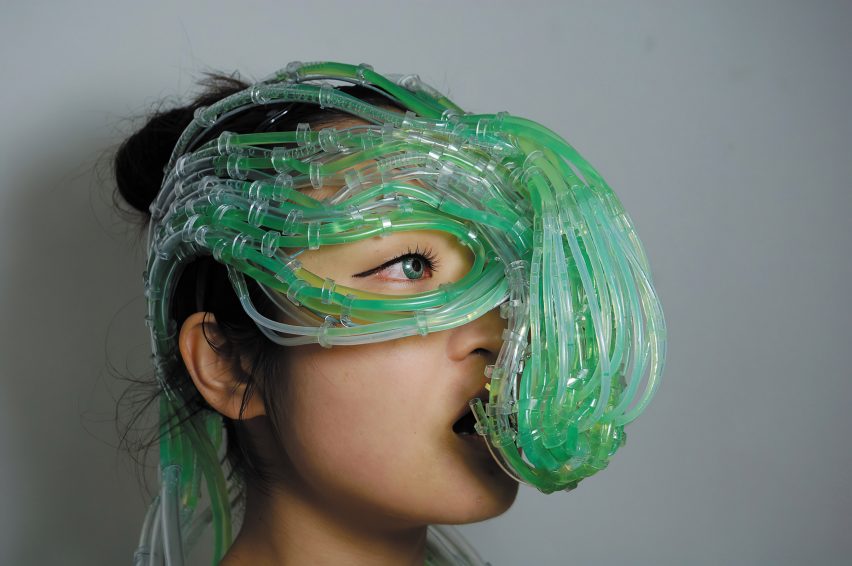
Algaculture (2010)
"Can we one day become truly self-sufficient eaters?
"Dried spirulina holds up to 70 per cent proteins, which is half more than soybeans. Spirulina is also likely to withstand uncertain climate futures as it can be cultivated in rather barren areas, does not need clean fresh water, and will gladly grow in highly saline water instead.
"Michael Burton and Michiko Nitta in the project Algaculture propose enhancing humans with new bodily organs populated by algae. How would a symbiotic human-spirulina relationship change the way we feed ourselves in the future? Instead of upgrading our foods or developing synthetic food substitutes, we can directly use genetic engineering to transform our bodies."
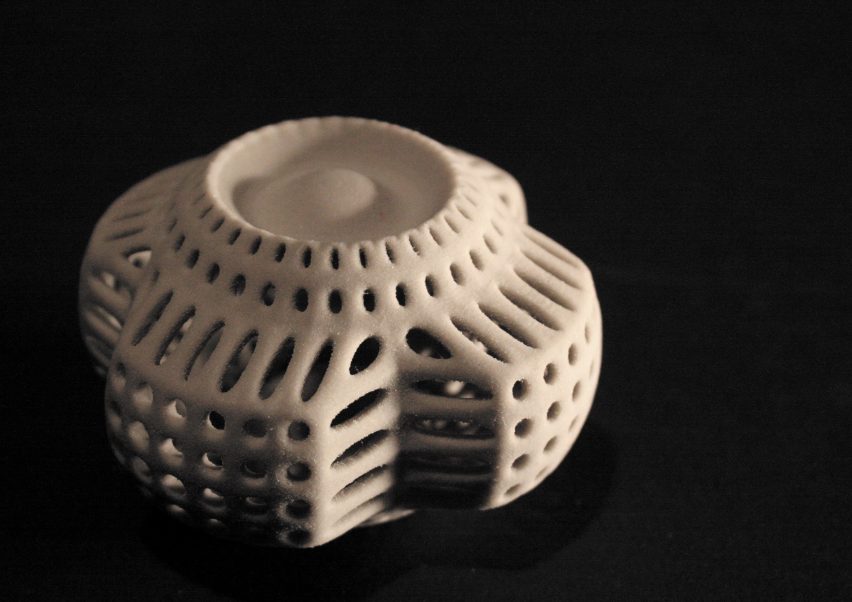
Insects au Gratin (2011)
"How to swallow culturally unaccepted foods? Can we overcome the taboo of eating all these novel ingredients?
"For many people, putting a full insect with all its texture in their mouths would be a challenge. Susana Soares in the project Insects Au Gratin reinvents insect cuisine using 3D printing.
"The result is a series of aesthetical edible food sculptures that have no resemblance to bugs. With the help of food design techniques, novel ingredients including insects can take on entirely new forms, textures and product types."
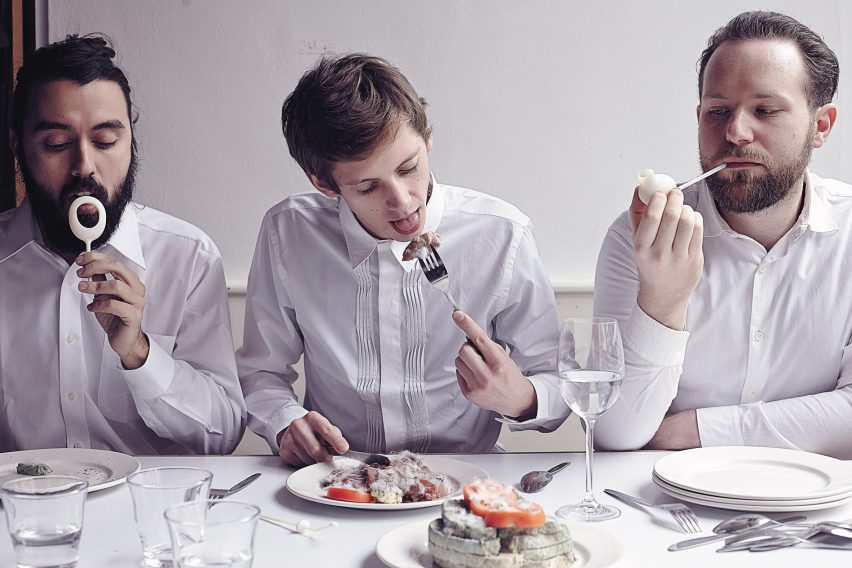
Human Hyena (2014)
"Future food-supply crises will push us to add new food sources to our diet. One way to do this is to explore ways to consume known and existing resources that are considered inedible.
"If we could consume, digest and even enjoy rotten food, including meat, even the most severe post-ecological crisis leftovers would satisfy our tastebuds.
"The Human Hyena project by Paul Gong proposes a radical solution to future food crises through the expansion of our digestive abilities. The project imagines how synthetic biology could transform the human digestive system to resemble that of hyenas. Gong has created a set of tools to help humans enhance and extend their diet."
Find out more about Human Hyena ›
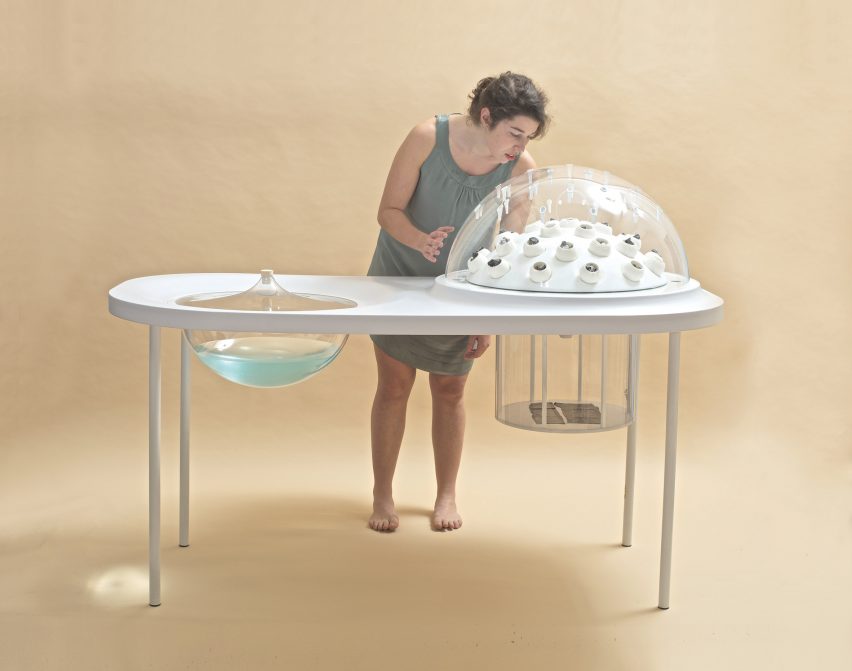
Fungi Mutarium (2014)
"Can non-organic materials be processed for food? With all the excess plastic in the environment, it might become a significant, perhaps even advantageous, part of the global food chain.
"In recent years, several studies have reported on organisms that can digest plastic. Fungi Mutarium by the LIVIN Studio is a prototype of a kitchen device that grows edible fungal biomass on plastic waste.
"The project uses fungi that are able to degrade toxic waste materials, including plastics. The fungi digest the plastic fed to them and produce edible fungal biomass, mainly mycelium. The designers are calling these objects FUs. And they are ready to be eaten in only a couple of weeks."
Find out more about Fungi Mutarium ›
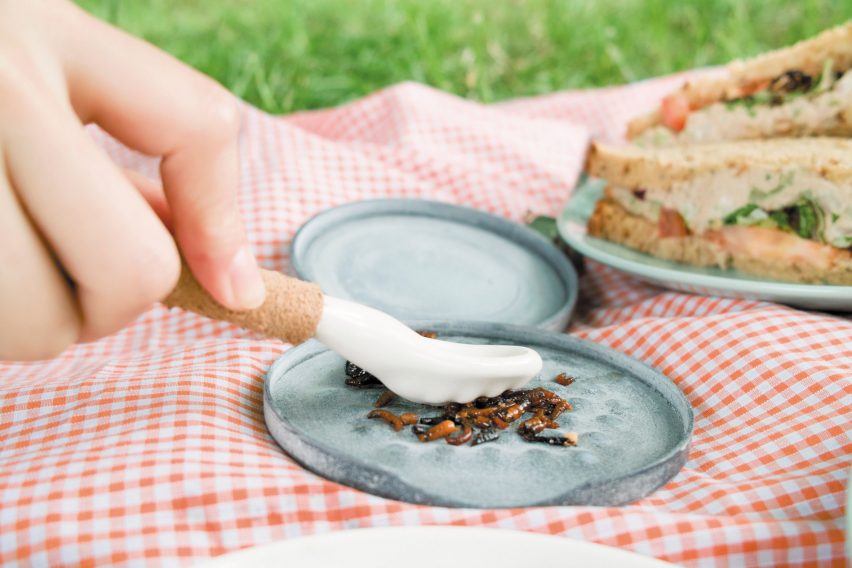
BUGBUG (2016)
"How to build new traditions and tools to embrace all these novel foods?
"To popularise entomophagy and create new experiences for eating insects, Japanese designer Wataru Kobayashi has created a set of picnic tableware called BUGBUG. The project consists of stainless-steel cutlery, including unique chopsticks for picking up insects and specialised serving plates."
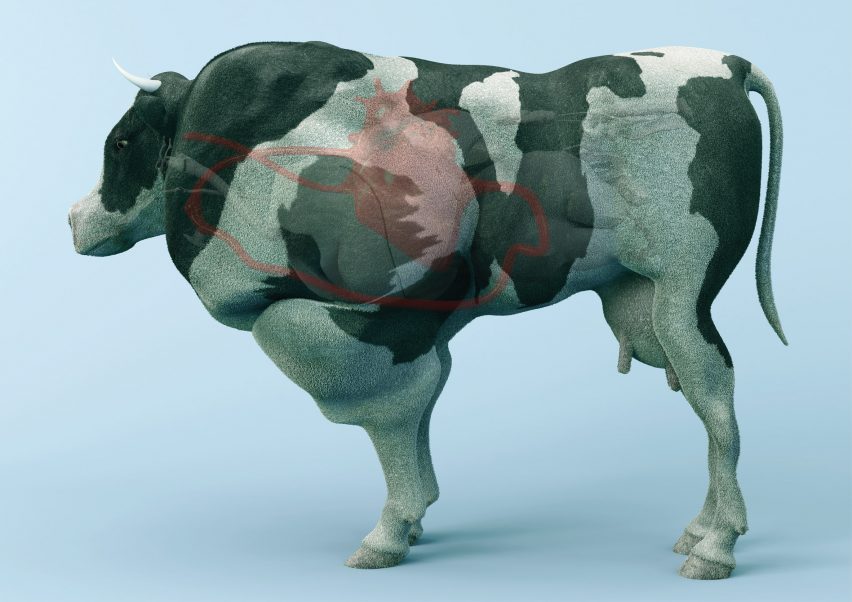
Cow of Tomorrow (2015)
"What about implementing radical changes to the current food industry? The answer to sustainable industrial farming in the future might be simply using farm animals for the production of more than just meat and dairy.
"In his project The Cow of Tomorrow, artist Paul Gong proposes implementing a tiny turbine in the artery of the cow, allowing it to use the blood flow to harness energy. What would be the environmental benefits of upgrading the cow into a powerhouse? Could the energy harvested from farm animals be used to power the farming industry?"
Find out more about Cow of Tomorrow ›
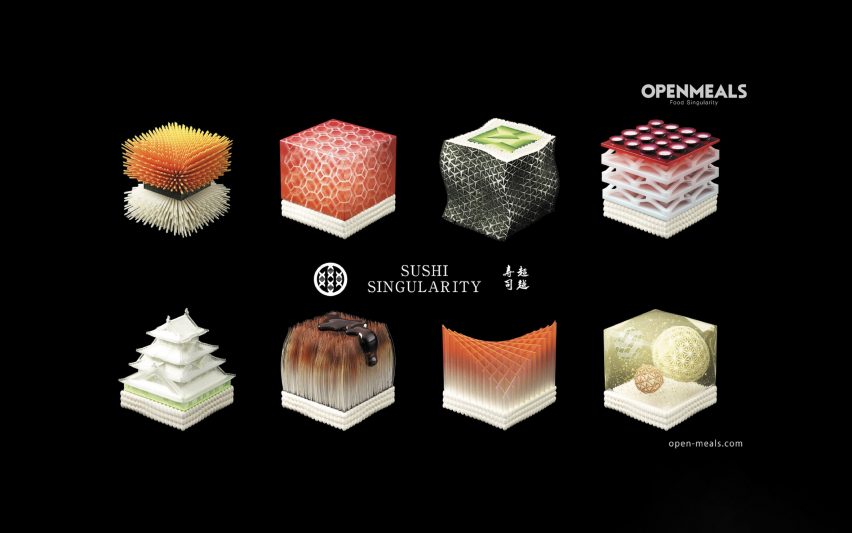
Sushi Singularity (2019)
"Can we calculate all these future meals to perfection?
"The Japanese design studio Open Meals explores hyper-personalisation in the food industry through its restaurant concept Sushi Singularity. Sushi Singularity will serve personalised food based on the guests' individual health identification (HID) obtained through DNA, urine and intestinal tests, thus meeting their individual nutritional needs."
Find out more about Sushi Singularity ›
The Anthropocene Cookbook by Zane Cerpina and Stahl Stenslie is published by MIT Press.
Dezeen is on WeChat!
Click here to read the Chinese version of this article on Dezeen's official WeChat account, where we publish daily architecture and design news and projects in Simplified Chinese.